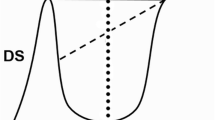Abstract
Objectives
Sella turcica bridging occurs with fusion or calcification of the anterior and posterior clinoid processes in the middle cranial region. This study aimed to compare the cephalometric parameters among normal shape, partial bridge, and total bridge of the sella turcica in adolescent and young adult subjects.
Methods
This retrospective study was performed on the lateral cephalometric radiographs of 410 Turkish adolescent and young adult subjects. The subjects were divided into three groups: normal sella turcica shape (128 females, 32 males; mean age: 17.7 ± 1.54 years), partial sella turcica bridge (129 females, 32 males; mean age: 17.8 ± 2.15 years), and total sella turcica bridge (66 females, 23 males; mean age: 18.2 ± 1.82 years). Thirteen angular and eight linear cephalometric measurements were performed using a cephalometric software program. The data were analyzed by one-way analysis of variance, and the Kruskal–Wallis test with the Bonferroni correction.
Results
Significant differences were found for Nperp–A distance, Nperp–Pg distance, and palatal plane-to-anterior cranial base angle among the groups (p < 0.016). There were no significant differences in the cephalometric parameters between the partial and total sella turcica bridging groups (p > 0.05).
Conclusions
This study evaluated a large amount of data for cephalometric measurements focusing on the degree of calcification of the sella turcica in adolescent and young adult subjects. The maxilla and mandible were located in a sagittally retrusive position in the partial and total sella turcica bridge subjects compared with the normal sella turcica shape subjects.


Similar content being viewed by others
References
Jones R, Faqir A, Millett D, Moos K, McHugh S. Bridging and dimensions of sella turcica in subjects treated by surgical-orthodontic means or orthodontics only. Angle Orthod. 2005;75:714–8.
Perez IE, Chavez KA, Ponce D. Frequency of sella turcica bridge and clinoid enlargement in lateral cephalometric plain film radiography from Peruvians. Int J Morphol. 2013;31:373–7.
Tekiner H, Acer N, Kelestimur F. Sella turcica: an anatomical, endocrinological, and historical perspective. Pituitary. 2015;18:575–8.
Sathyanarayana HP, Kailasam V, Chitharanjan AB. Sella turcica—its importance in orthodontics and craniofacial morphology. Dent Res J. 2013;10:571–5.
Melsen B. The cranial base: the postnatal development of the cranial base studied histologically on human autopsy material. Acta Odontol Scand. 1974;32:9–126.
Cederberg RA, Benson B, Nunn M, English J. Calcification of the interclinoid and petroclinoid ligaments of sella turcica: a radiographic study of the prevalence. Orthod Craniofac Res. 2003;6:227–32.
Scribante A, Sfondrini MF, Cassani M, Fraticelli D, Beccari S, Gandini P. Sella turcica bridging and dental anomalies: is there an association? Int J Paediatr Dent. 2017;27:568–73.
Becktor JP, Einersen S, Kjær I. A sella turcica bridge in subjects with severe craniofacial deviations. Eur J Orthod. 2000;22:69–74.
Korayem M, AlKofide E. Size and shape of the sella turcica in subjects with Down syndrome. Orthod Craniofac Res. 2015;18:43–50.
Kjaer I. Orthodontics and foetal pathology: a personal view on craniofacial patterning. Eur J Orthod. 2010;32:140–7.
Erbay EF, Caniklioğlu CM, Erbay ŞK. Soft tissue profile in Anatolian Turkish adults: part I. Evaluation of horizontal lip position using different soft tissue analyses. Am J Orthod Dentofac Orthop. 2002;121:57–64.
Leonardi R, Barbato E, Vichi M, Caltabiano M. A sella turcica bridge in subjects with dental anomalies. Eur J Orthod. 2006;28:580–5.
Platzer W. Anatomy of taenia interclinoidea and its relation to the internal carotid artery. Fortschr Geb Röntgenstr Nuklearmed. 1957;87:613–6 (in German).
Lang J, Tisch-Rottensteiner K. Form and form variations of the sella turcica. Verh Anat Ges. 1977;71(Pt 2):1279–82 (in German).
Müller F. Die Bedeutung der Sellabruecke für das Auge. Klin Monatsbl Augenheilkd. 1952;120:298–302 (in German).
Ali B, Shaikh A, Fida M. Association between sella turcica bridging and palatal canine impaction. Am J Orthod Dentofac Orthop. 2014;146:437–41.
Abdel-Kader HM. Sella turcica bridges in orthodontic and orthognathic surgery patients. A retrospective cephalometric study. Aust Orthod J. 2007;23:30–5.
Meyer-Marcotty P, Reuther T, Stellzig-Eisenhauer A. Bridging of the sella turcica in skeletal class III subjects. Eur J Orthod. 2010;32:148–53.
Sundareswaran S, Nipun CA. Bridging the gap: sella turcica in unilateral cleft lip and palate patients. Cleft Palate Craniofac J. 2015;52:597–604.
Author information
Authors and Affiliations
Corresponding author
Ethics declarations
Conflict of interest
Suleyman Kutalmış Buyuk, Ahmet Karaman, and Yasin Yasa declare that they have no conflict of interest.
Human rights statement
All procedures followed were in accordance with the ethical standards of the responsible committee on human experimentation (institutional and national) and with the Helsinki Declaration of 1964 and later versions. The study was designed as a retrospective archival study.
Animal rights statement
This study does not contain any studies with animal subjects performed by any of the authors.
Rights and permissions
About this article
Cite this article
Buyuk, S.K., Karaman, A. & Yasa, Y. Relationship between sella turcica bridging and cephalometric parameters in adolescents and young adults. Oral Radiol 35, 245–250 (2019). https://doi.org/10.1007/s11282-018-0349-5
Received:
Accepted:
Published:
Issue Date:
DOI: https://doi.org/10.1007/s11282-018-0349-5




